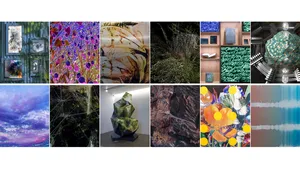Meet humanity’s first artists through virtual reality
Editor’s Note: France’s Chauvet Cave contains some of the world’s oldest prehistoric drawings. It’s so delicate that it’s closed to the public, but thanks to our partner, the Syndicat Mixte de la Grotte Chauvet, you can now step into the world of our ancient ancestors through Google Search’s augmented reality feature as well as virtual reality. One of these ancient ancestors, who has asked to remain anonymous, has time-traveled 36,000 years to share what the cave was like back then.
We began our journey to the big cave days ago. Today we arrive and settle near the stone arch that spans the river. We light a fire, signalling to our people up near the caves that we’re here. We’ve brought small stone tools with us to sew the arrowheads we use for hunting. Perhaps we’ll be able to trade them.
There’s plenty of moonlight, so once we’ve made camp I venture out, hiking up to the cave’s entrance to greet the others. The children are still awake, playing with their toys but also listening intently to the lions roaring in the distance. There used to be bears living here too, but they’re long gone.
The closer I get to its entrance, the more the dark cave seems to draw me in, so I light a torch and step inside. After a short walk, the fire illuminates where we—and those before us—have left our marks. Here, someone scraped the clay, exposed the limestone and painted their world, long before we arrived. My favorites are the horses—I think one is afraid, another is playing, and a third one, the curious one, has pricked up its ears inquiringly.
Near the familiar mammoth, a new image catches my eye—perhaps some of our young hunters have depicted this lion to celebrate their success.
The fresco is so enormous, it’s impossible to take it all in. I step back to try and comprehend its meaning. There are cave lions, reindeer and stags, all seeming to move in the play of light and shadow. Just a few lines, drawn by practiced hands, and somehow we have a masterpiece.
Then there are the handprints left by those who came before us. I stand on my toes and stretch to match my own hand to the imprints on the cold rock, and suddenly I feel compelled to leave my mark too. I’ve never been chosen as a painter, but I’m alone and feeling daring, so I dip my hand into the red paint that’s been left out, rise back to my toes, and add my handprint to the others on the wall.
As it dries, I draw back and watch as the animals and the handprints fade into the darkness. Who knows how long they’ve all been here, and how long they’ll remain?
Another note from the editor: if you enjoyed hearing from our anonymous cave ancestor, check out the following images of the cave she described, or find out more in Google Arts & Culture’s latest exhibit “Chauvet: Meet our Ancestors.”
Panoramic view of the Pont d’Arc, a stone arch over the river with the Chauvet Cave mountains in the background. © David Huguet
When you search for the Chauvet Cave on Google Search, the AR in Search features let you view and interact with a 3D model of a fresco in the cave. Use your smartphone to place it directly into your own space, to get a sense of scale and detail.
“Chauvet - The Dawn of Art” is a virtual reality experience available on HTC vive that guides visitors through the Chauvet Cave.
Narrated by Daisy Ridley (English version) or Cécile de France (French version), it shows you 12 stations within the cave. No worries if you don’t have a VR headset - this Youtube 360 video version is equally immersive.
The “alcove of the felines” is the central part of the Horses Fresco, one of the masterpieces of Chauvet Cave.
© David Huguet
This is the 3D model of a bear skull that was placed on a block of stone in the cave. It was staged deliberately, meant to be seen this way, and has not moved for 36,000 years.






